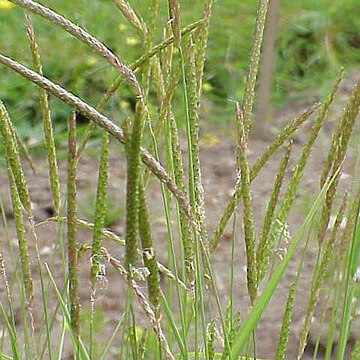Annuals or perennials, rhizomatous or stoloniferous or caespitose, bisexual. Culms unbranched above. Leaves: ligule an unfringed membrane; blade rolled in bud. Inflorescences paniculate, contracted, usually ± ovoid or spike-like and narrowly lanceoloid to cylindrical. Spikelets pedicellate, laterally compressed, falling with glumes, with 1 bisexual floret terminating rachilla. Glumes 2, connate with margins fused at base or free, subequal (with upper glume often slightly longer), as long as or longer or shorter than adjacent lemma, awnless, keeled, ciliate on keel; lower glume 1–3-veined; upper glume 2 or 3-veined. Lemmas often with margins connate near base (all species in Australia), less firm than to similar in texture to glumes, hyaline, sometimes keeled, 5–7-veined, dorsally 1-awned; awn straight or geniculate. Palea absent (all species in Australia) or very reduced. Lodicules absent. Stamens 3. Styles fused. Caryopsis: hilum short; embryo small.
Spikelets 1-fld, articulated below the glumes; pedicels conspicuously swollen at the joint; glumes equal, 3-veined, strongly compressed and keeled, ± connate at base, especially on the adaxial side; lemma thin and membranous, about as long as the glumes, 5-veined, the margins often ± connate, the midvein excurrent into an awn; palea in ours minute or none; low annuals and perennials with flat lvs, membranous ligule, and dense, cylindric or subcylindric, spike-like panicles. 25, N. Temp.

